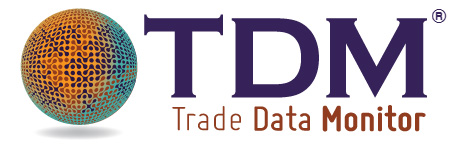China maintained its strong 2020 export performance in October, buoyed by a summer of consumer spending in the U.S. and Europe after a locked-down spring. Overall, outbound shipments increased to $237.2 billion, up 11.4% compared to the same month a year before.
After almost a year of robust export growth, it’s becoming clear that the global Covid-19 pandemic is accelerating the trend of China’s emergence as the world’s dominant economy.
China is now the only major industrial nation expected to show economic growth this year. The International Monetary Fund has predicted a gross domestic product expansion of 1.9% in 2020, and 8.2% in 2021. Manufacturing in the country has risen to its highest levels since 2011. China aims to become the world’s biggest economy by 2035.
That economic power is based on exports, especially to the U.S. and Europe. And now China, armed with a head start in beating back the Covid-19 virus, is grabbing market share from companies and countries that have had a more difficult time getting fired up again.
Exports to the European Union increased 9.2% to $33.6 billion, while shipments to the U.S. spiked a whopping 22.2% in October, rising to $43.8 billion and widening its trade surplus, a source of political tension with Washington, to $31.4 billion from $30.8 billion in September.
China’s ongoing export boom is even more extraordinary given the world’s ongoing contraction. The Organization for Economic Co-operation and Development has said that global GDP will shrink 7.6% in 2020 and expand by 2.8% in 2021, with a full recovery coming only in 2022.
What’s remarkable, too, is the wide range of goods China is exporting. In October, China increased its exports of consumer goods, like toys and furniture, medical devices, and high-tech goods.
Exports of garments and clothing accessories increased 6.8% to $13.2 billion. Exports of home appliances increased 39.6% to $6.2 billion. Shipments of plastic products leapt 34.6% to $8 billion. Exports of auto parts increased 18.8% to $5.5 billion.
To be sure, there are signs of saturation in some markets. Exports of mobile phones declined 20.2% to $12.8 billion. Shipments of bags and containers fell 19.9% to $1.8 billion. There is a risk that Western consumers will cut back on spending as they run out of cash and face societal restrictions this winter.
With Covid cases resurging, China will keep shipping containers of masks, intubation machines, and other medical gear needed to fight the pandemic. In October, exports of medical devices increased 31.6% to $1.4 billion.
At it gets wealthier, China is also on its way to becoming the world’s top consumer market. China’s per capita GDP will achieve the status of a “mid-level advanced country”, according to a recent report by the Chinese communist party.
In October it ramped up imports of meat, fruits, and cereals. Its purchases of soybeans increased 44.2% to $3.5 billion. Imports of high-tech products increased 9.7% to $60.5 billion. China’s imports of coal declined 48.5% to $921 million, a stunning decline that reflects its phasing out of the dirty fuel as an energy source. In 2010, China imported $18.2 billion worth of coal. In its place, China is burning more natural gas. Imports of natural gas shrank by dollar value but increased by quantity.
Beijing has promised to keep its promise, made in January as part of the so-called Phase 1 trade deal, to buy an extra $200 billion of U.S. soybeans and other commodities over the next two years.
It may have to make further deals to appease trading partners. With its economy outpacing everybody else’s, China’s trade surplus increased in October to $58.4 billion from $37 billion in September, beating economists’ expectations by around $10 billion.


